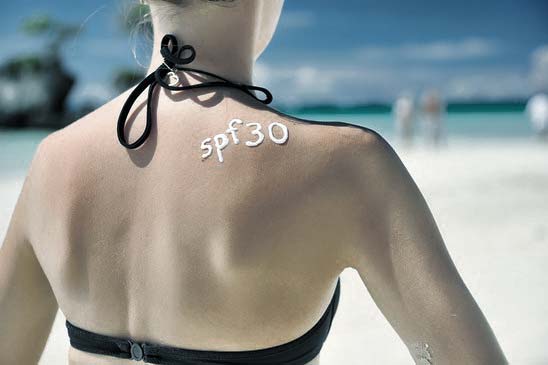I love spending time at the beach and sail around the world to find as many beaches as I can, no matter what time of year it is. But for most people, beach life is synonymous with summertime and for those of us who like to go running, the beach is a great place.
It doesn’t require science to figure out that running on sand is more demanding than running on pavement. Simply ask anyone who’s ever been on sand.
But science can tell us just how a lot more challenging it actually is.
In 1998, three researchers in Belgium published “Mechanics and energetics of human locomotion on sand,” and their conclusions on beach-related exercise was intriguing: jogging on the sand takes one point six times more energy than jogging on a hard surface, mainly because:
- The mechanical work required to get through the sand.
- The inefficiency of the work done by tendons and muscles as a result of sand’s unpredictable surface.
Needless to say, the research workers in Belgium did this testing in soft, dry sand. Thanks to the ocean soft sand, and its dynamic tides is often not the sole choice for beach jogging.
In case you live near the beach, or you’re heading out for a holiday this summer, you may be interested in taking your love of running to the coastline. Many runners in coastal regions do this to get a change of pace work out in one of the very most serene places on the planet.
For runners, not all beaches are created equal. The truth is, there are a few major variables which could make for running on a whole dud to certain areas.
Run on the Proper Shore
- Length. A jetty, a cliff, a river mouth…so many things can shorten the span of a shore– and turn your anticipated run into a huge disappointment. Look for a shore that’s a mile of coastline that is uninterrupted.
- Slant. Some beaches are not suitable because they’re cambered, or crowned. Depending on how cambered the beach is, this could cause you to run on a slanted surface for an extended interval, which can result in injury. The flatter, the better.
- Surface. For the bunch that was barefoot, some beaches are littered with broken seashells which can be distressing to run on and rocks. Choose your shoes with you just in case.
Pick the Right Kind of Sand
Determined by the tide cycle, you may have multiple surfaces to pick from. And they’re day and night when it comes to difficulty.
The soft sand is the surface that’s completely dry. It has plenty of give, which makes running on it hard (thus, why it takes 1.6 times more energy than paving.)
The wet sand, or sand that is packed, is what’s left behind as the tide recedes. It is a lot more solid than soft sand. Visit the wet sand, if you’re new to beach jogging. In case you’d like to do a soft-sand run, get ready for a fantastic work out.
Watch the Tide
To get the most wet sand to run on (or the most area to run on, if your shore is narrow), ensure that you go at low tide, or at least when the tide is receding. Tide graphs are simple to discover on the Internet.
You will not have any wet sand to run on, if you head out during high tide or when the tide is rising –or at some spots, you may not have any beach at all.
Choose to Run With or Without Shoes
The wet sand is strong enough you could run with shoes and not be worried about sinking in. But of course, the sand is a soft enough surface to make barefoot jogging possible, maybe preferable.
If you decide to really go without shoes, do so with caution. Your feet are used to the support, and at the end of even a brief shore run, you might observe that your ankles, achilles, calf muscles or the top of your feet are fatigued or hurting.

Check Your Knees
Some beaches have more slanted surfaces than many others, but even the most level seashores, at the best tides, have some slant to them. And generally speaking, the higher the tide, the more angled the sand. Running on an angled surface can wreak havoc on your knees and hips, especially if you’re doing beach running as part of a longer running training program. Make sure you run out and back. The unevenness isn’t good for either leg, but it is better to put both legs through the strides than only one (for instance, running down a beach in one direction, then back on the road). But if you feel knee or hip pain, stick to the roads or amount trails.
Deep Sand Work Outs
Even though you can not get down to the beach at low tide for the hard-packed sand , running in deep sand once in a while is a terrific kick in the butt. Sand, like soft snow, gives with each step, so your leg muscles (hello, burning calves) will feel the burn. This can not be really inconvenient, though, should you not have much time for a run. Doing a quick work out in deep sand will seldom leave you wishing you had more time for a longer run.
Gear Up
Sunscreen is essential, as from directly overhead in addition to running next to the water will provide you with the reflective beams. A hat or visor along with Sunglasses are also useful in keeping you focused and comfortable on your run, instead of that fireball in the sky blinding you. And when you do a lot of shore jogging, look for shoes that have tight mesh over open mesh. A closed mesh can keep your shoes from filling up with sand when you’re running on the soft material. And since it is sometimes unavoidable to get just a little sand in, wear socks that ward off blisters. If your sock and shoe combo still isn’t abating the rub, consider a lubricant like Sportslick or BodyGlide for long jogs, particularly long runs where your feet might get wet and sandy.

Take Advantage of Your Environment
Nothing caps off a fantastic beach run much better than a jump in the ocean (and thank goodness for quick drying run clothes). A soak in the sea will not give you the same retrieval benefits as an ice bath, unless you’re running on a beach in Canada in the winter–but it’ll certainly leave you refreshed. And to make the most of more setting, jump over other obstacles for agility training or heaps of seaweed, and race the sun as it sets into the water for speedwork.
